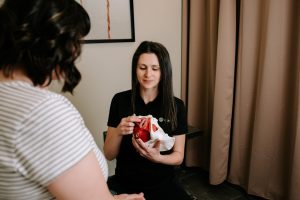I think its safe to say that everyone at some point has heard the phrase “You are what you eat”. Its such a cliche that most people discount how profound that statement is. I’m gonna let you in on a little secret: ITS TRUE. What you put into your body has a direct effect on every aspect of your flesh machine: your mood, your ability to recover from injury, energy levels, performance, disease…… the list goes on. Unfortunately mainstream diet guidelines are a pile of shit and most of the information we get about the food we consume comes from the people making money by selling it to us. This article looks to clarify some of the myths and lies we’re told about food. As a disclaimer – I’m not formally educated as a dietician or diet expert but I am a human who has a deep knowledge of the human body and a degree in biology so I’m not just talking out of my ass. I’m also a human being that cares about how I feel, how I sleep and the food I’m putting into my body and take a personal interest in the relationship between food and health. Hope you like the article

We’re built to be sugar addicts
The first point I want to review is the fact that sugar addiction is the biggest obstacle in most peoples quest to improve the food they eat. Why are so many people addicted to sugar? The human body was engineered to be addicted to sugar because it used to be a valuable craving to have. Our bodies really haven’t changed a whole lot for thousands of years but the world we live in has changed drastically. Before the days of sugar being available anywhere and everywhere, sugar was not easily available in its refined form. Sugar as we know it today is a concentrated, high energy, widely and easily available substance. It doesn’t occur in nature in its current form and therein lies the issue. One of the closest ways humans had access to sugar during the course of evolution was honey. To give you an example of how sought after this energy rich highly refined sugar was , amazon tribesmen climb 200+ feet vertically and break into bee hives to steal the gooey liquid. They literally risk falling to their death and being stung hundreds of times just to get the refined sugar for them and their family to survive on. Nowadays you can walk to any street corner and get a chocolate bar. Moral of the story is that you’re designed to be addicted to sugar but not to have it so easily available.
Another effect highly refined sugar consumption has apart from packing on pounds of fat (which is how your excess energy is stored – and sugar is very high in energy) is that your taste buds get numbed. Things that were once sweet don’t taste as sweet and natural sugars like fruits stop tasting so good. Reduce your refined sugar consumption and your tastebuds will re-sensitize – fruit will literally start tasting like candy as it’s supposed to.
Sugar is the biggest tool food companies use to prey us humans by taking advantage of our innate addiction. Everything these days seems to have sugar in it and it doesn’t make sense. Most people would assume a glass of orange juice is a healthy choice but it has as much sugar as a can of coke. I was eating coleslaw the other day and after being amazed how good it tasted looked at the ingredients and number two on the list was sugar. Stir fry sauces, flavored yogurt, salad dressings and even ketchup – all loaded with sugar and most people don’t realize it. Be aware of and restrict your sugar consumption because its the biggest diet risk today and we aren’t pointing the finger to it as much as we should.

A Bayaka tribesman climbs a 200+ foot tree to reach the most sought after of jungle foods: honey. This is how hard refined sugar is supposed to be
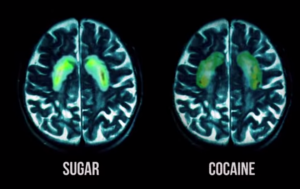
This is a PET brain scan of a human. It lights up the pleasure centers of the brain – the brighter the signal the more addictive the substance. Crazy stuff
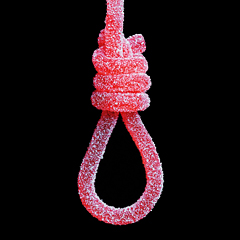
Sugar can be far more dangerous than most people realize
The Dairy myth
The dairy industry has accomplished one of the most successful marketing campaigns of modern day (second only to diamond companies and engagement rings). Here is a fact many people don’t know: dairy isn’t a required element of the human diet and our bodies aren’t designed to process it well (everyone is lactose intolerant to some degree, most of us just happen to be able to process it decently – lactose intolerance just means you’re worse at processing it). Milk is made by a pregnant cow to grow a calf as quickly as possible from 100lbs to about 8x that weight when its weaned from the milk. The crazy growth hormones (no wonder milk has been reported to cause lumps of wild cell growth in women’s breasts) required to achieve that in combination with the antibiotics passed through the cow make it a disaster for human health. Just to give you an idea of how well the marketing of the dairy industry has done, this harmful liquid has wormed its way into schools and counter to all the propaganda it isn’t even a good source of calcium (in fact people thinking it is a good source has reportedly caused osteoporosis in many because they feel they don’t have to get it from elsewhere). Stop consuming dairy regularly – its for baby cows, not humans and its not good for your body.
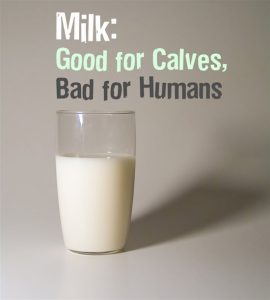
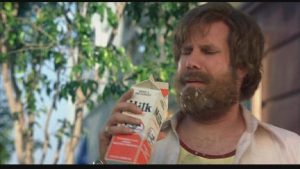
Milk was a bad choice
Nutrient deficient vegetables
For both fruits and vegetables – the longer the time taken from harvest to consumption the less nutrient dense and flavorful the item. Most vegetables found in the grocery store these days are imported from 2000+km away and grown in soils of very poor nutrient content from having the same crop grown repeatedly like a conveyor belt. The best way to ensure the highest nutrient and mineral density (and best flavour) of your vegetables is buy local (or even better, grow your own – I talk about this in a few paragraphs). Check out the label next time you head to the grocery store and instead of buying something grown in Mexico, try and buy fruits and vegetables grown in your own province. There are some great companies out there catering to the grown locally movement – Eating Well Ottawa is a great example of this. They source fresh locally grown produce and will deliver boxes straight to your door. Look into it, it supports local community farmers and gets you better quality food than you will find in most of the large chain grocery stores.
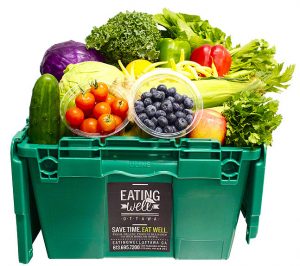
Locally grown delivered produce
Carbs are sugar
Many people don’t completely understand that sugar comes in many forms. Refined sugar is the simplest form of carbohydrates but bread, pasta, potatoes, rice – they’re all carbs and basically a different form of sugar. I don’t want to demonize sugar and carbs because they are a tremendous energy source in our diet but you need to consume this energy based on how much energy you are burning. A ton of sugar/carbs are great for someone who has a physical job and does 2 hours of high intensity crossfit workouts everyday but for someone who is relatively sedentary and gets almost no physical activity carbs and sugars go straight into storage as fat. Know that sugar and carbs are high energy substances and consume them based on what you do with your body. If you sit for 8 or more hours in a day, reduce your carbohydrate (including sugar) intake. That means starting with eliminating your morning cereal – its crazy packed with energy and terrible for your health if you don’t use that energy.
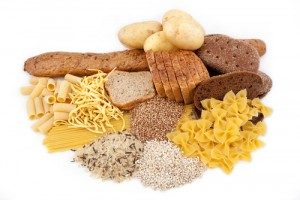
Exercise is a small part
Most people assume that weight loss comes from exercise. True it plays a part but its actually a very small factor in the battle to shed fat. NEAT stands for Non Exercise Activity Thermogenesis – a fancy word for describing the amount of NON-EXERCISE activity you do during the day that burns energy. If you look up how much time on a treadmill you need to spend to burn off those 2 donuts you had at lunch this topic makes a lot more sense. This means you have 2 choices: reduce you energy intake or increase your non exercise activity. A good start is transitioning from sitting at work to standing which burns about 50 extra calories of energy per hour and adds up to something like 10 marathons a year – powerful stuff. Exercise is a great way to elevate your heart rate and put on some extra muscle but its not the solution to a problem that stems from a diet and sedentary lifestyle cause. Be more active when you aren’t exercising and modify your energy intake.

Its not all about calories
Not all calories are made the same. A calorie is a unit measurement of energy and says nothing about how well the substance is processed, used or absorbed by the human body. Place emphasis on the quality of the calories you ingest and not just on the number of calories you consume. 20 calories from a nugget of fudge are clearly not the same from a health perspective as 20 calories of nutrient packed Kale. Calories tell you about the energy content of food but thing like minerals, phytonutrients, compatibility with our digestive tract and gut bacteria need to be prioritized and considered as well.
Supplements 101
The world of supplements is a very muddy and confusing realm. What works? what doesn’t? whats worth me spending money on? Those questions plus the poor regulation, information and quality issues found in this industry make it hard to decide what you need if anything. A human ingesting a balanced diet of locally grown produce and animal protein shouldn’t need anything to supplement their diet but the fact that many of us consume a diet far from what our bodies are designed to ingest means we can be missing out on some crucial elements – hence the need for supplements. My recommendations to patients is usually for 3 things: 1) a good multivitamin (because trace elements and minerals are usually lacking in our vegetables now grown in poor soils), 2) some vitamin D (an essential hormone, found in very few foods, essential for calcium absorption, most people are deficient and need to take much higher doses than what is recommended), an 3) fish oil or even better – krill oil (loaded with dense omega fats and natural anti-inflammatories). These are just my recommendations and are the 3 substances that have a ton of quality research to back and ones I have found greatest benefit from through constant self experiment with supplements and their effects on how I feel and function
Make a home garden
Eating food that you have either hunted or grown is one of the most satisfying primitive pleasures a human can experience. Putting in the time to water and care for a small garden will pay dividends in delicious and chemical free vegetables that can be picked right before consuming for the best possible taste and nutrient density. With food prices getting higher and food quality lower, its a great money saving health project most people can take part in. If you don’t own a home, build a partnership with a friend or family member who does and play a role in caring and planting the garden and share the fruits of your labour. Even a couple potted plants to start can be a great experience and the time and effort put into makes the results even more delicious.
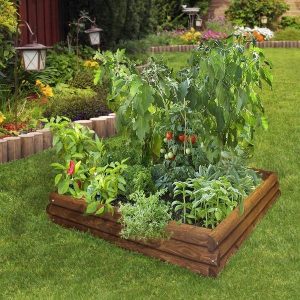
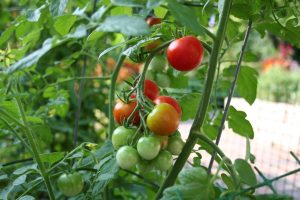
Now that we’ve reviewed some of the things we shouldn’t be eating, lets talk about eating the proper foods. In the world of carbs, macronutrients, proteins, fats etc etc things can get very confusing so lets make food very simple. Here are a few principles to keep in mind when deciding what to buy when you do groceries:
1. Avoid eating things that come out of a cardboard box
-this one is pretty self explanatory. Nature doesn’t make cardboard boxes so it probably didn’t make whats coming out of it and so it shouldn’t be something you’re eating regularly.
2. Eat things that came out of the ground or had a pulse at some point
-Natural foods occur in nature. Deeper the green, brighter the color or the more recently it was killed the better.
3. Eat fresh
-Try and eat your food as close to when it was picked as possible. After food is harvested its a ticking clock for nutrients and flavor degrading. The sooner its consumed the more rich the nutrient density
4. Don’t cut out sugar or sweets but minimize their consumption
-I don’t care how terrible some foods are for you, brownies and ice cream are damn delicious. We only have so much ability to restrain in our tank so instead of completely eliminating sugar and poor foods (that taste delicious) from your diet, consume them like an adult. Once in a while is fine. Daily is devastating
Those 4 principles cover a lot of scenarios to guide you on your journey to eating better food.
Always insist on food quality. Don’t complain about the price of quality food and buy $5 coffees and the latest smartphone. You only get one body, make it a priority to take good care of it or it will start to fail and breakdown (both mentally and physically). A healthy body starts with ingesting the right types of energy to fuel and provide your flesh machine with the best building blocks.
I hope this article helps clarify diet in your brain and gives you some information you can use next time you’re in the grocery store, looking to improve your health or looking to shed some weight. All the best on your journey
Cheers,
Nick



